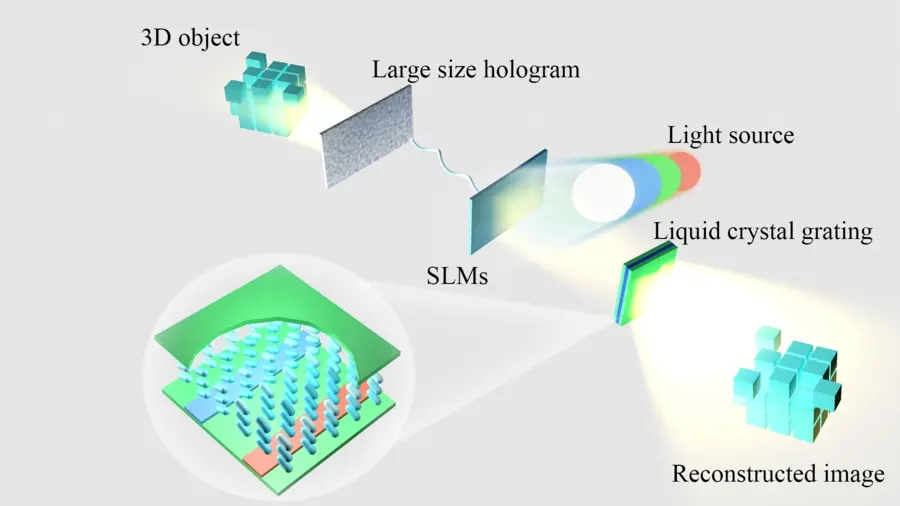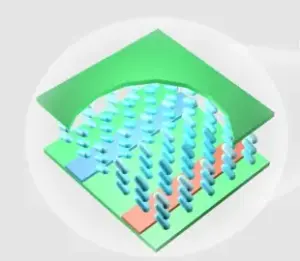Researchers at Beihang University in Beijing, China, have used maximum defraction modulation to create a large viewing angle holographic display.

Holographic 3D displays can show 3D images that appear to float in space without needing special glasses. This makes them useful for applications like education, entertainment, and medicine. However, current holographic displays have a limited viewing angle, meaning the 3D image can only be seen properly from a small range of angles. This restricts how many people can view the image at once.
The researchers wanted to create a holographic display with a wider viewing angle so more people could see the 3D image clearly at the same time. They used a combination of spatial light modulators (SLMs) and liquid crystal gratings in their display system. SLMs are devices that can show hologram patterns when light shines on them. They can diffract the light to reconstruct a 3D image. The researchers calculated the maximum diffraction angle possible from the SLMs based on their limited diffraction range. Using this, they generated larger hologram patterns that expanded the range of diffraction angles, allowing for a wider viewing zone.
The liquid crystal gratings further diffracted the reconstructed 3D image light, continuously spreading the viewing angle even more. In testing, this new technique achieved a viewing angle of 73.4 degrees, much larger than previous displays under 60 degrees. The improved wide viewing angle makes it possible for larger groups to see the holographic 3D display at the same time. This technology could enable more practical uses of holographic displays in education, entertainment, medical imaging, and more.

As for some of the shortcomings of the research, the current study demonstrates the feasibility of expanding the viewing angle, but only uses a single wavelength (monochrome) rather than multiple colors. Due to fabrication constraints, the researchers could not yet demonstrate a full-color display with corrected chromatic aberration and wide viewing angle. For a full-color display, multiple wavelengths of light are needed – red, green, and blue. Secondly, the liquid crystal grating is wavelength-dependent, meaning it diffracts different wavelengths at slightly different angles. When illuminated by multiple colors simultaneously, this causes a chromatic aberration effect, where the colors are separated and the image distorted. But the researchers do plan to continue researching solutions to enable wide-viewing multi-color holographic displays in future work.
Reference
Di Wang, Nan-Nan Li, Yi-Long Li, Yi-Wei Zheng, Zhong-Quan Nie, Zhao-Song Li, Fan Chu, Qiong-Hua Wang. Large viewing angle holographic 3D display system based on maximum diffraction modulation[J]. Light: Advanced Manufacturing 4, 18(2023). doi: 10.37188/lam.2023.018

